From the Amazonians and Tomyris to Queen Zenobia and The Night Witches, warrior women have played significant roles throughout history and mythology, showcasing their strength, courage, and prowess in combat. These remarkable individuals have defied traditional gender roles and expectations, proving that women can be just as formidable warriors as men.
There were countless others whose stories remain untold or have been lost to time. Nevertheless, their bravery and determination continue to inspire people, demonstrating that women have always been capable of being fierce and skilled warriors.
Table of Contents
The Amazonians: Warrior Women of Greek Legend
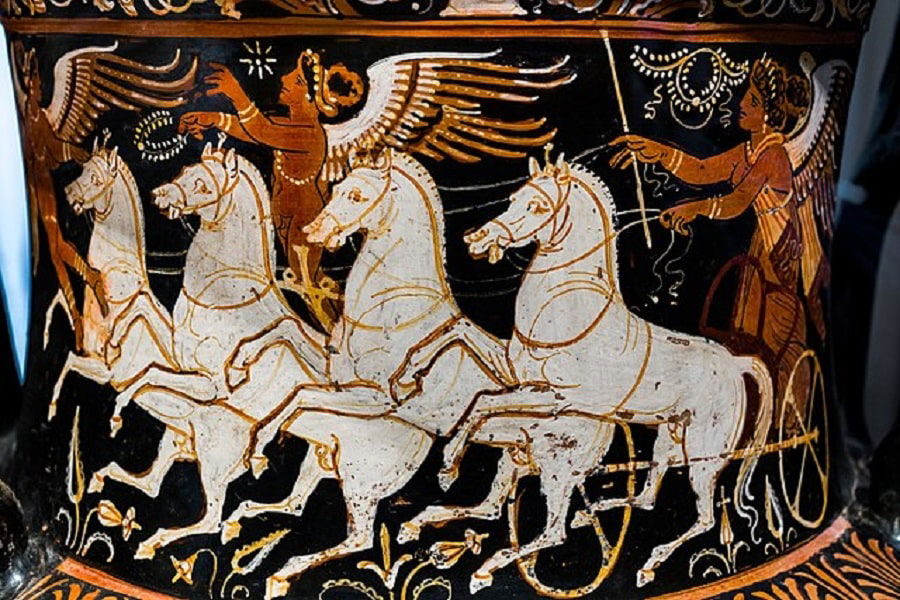
The Amzonians may be the most famous instance of all the woman warriors in the world. It is universally accepted that they are the stuff of myth and legend. But it is also possible that the Greeks modeled them on stories of real warrior women they might have heard of.
Archaeologists have found tombs of Scythian women warriors. The Scythians had close ties with both the Greeks and the Indians, so it is quite possible that the Greeks based the Amazons on this group. A historian from the British Museum, Bettany Hughes, has also asserted that the graves of 800 women warriors were found in Georgia. Thus, the idea of a tribe of warrior women is not that far-fetched.
The Amazons were featured in various Greek myths. One of the twelve tasks of Heracles was to steal the girdle of Hippolyte. In doing so, he had to defeat the Amazonian warriors. Another tale tells the story of Achilles killing an Amazonian Queen during the Trojan War and being overcome by grief and guilt over it.
Tomyris: Queen of the Massaegetae

Tomyris was the queen of a group of nomadic tribes that lived east of the Caspian Sea in the 6th century CE. She inherited the position from her father, being the only child, and is said to have waged a fierce war against Cyrus the Great of Persia.
Tomyris, which means ‘brave’ in the Iranian language, refused Cyrus’ offer of marriage. When the powerful Persian Empire invaded the Massaegatae, Tomyris’ son Spargapises was captured and committed suicide. She then went on the offensive and defeated the Persians in a pitched battle. No written record of the battle exists but it is believed Cyrus was killed and his severed head offered to Tomyris. She then dipped the head in a bowl of blood to publicly symbolize his defeat and avenge her son.
This may be a slightly melodramatic account but what is clear is that Tomyris defeated the Persians. She was one of many Scythian warrior women and perhaps the only one known by name because of her status as queen.
The Warrior Queen Zenobia
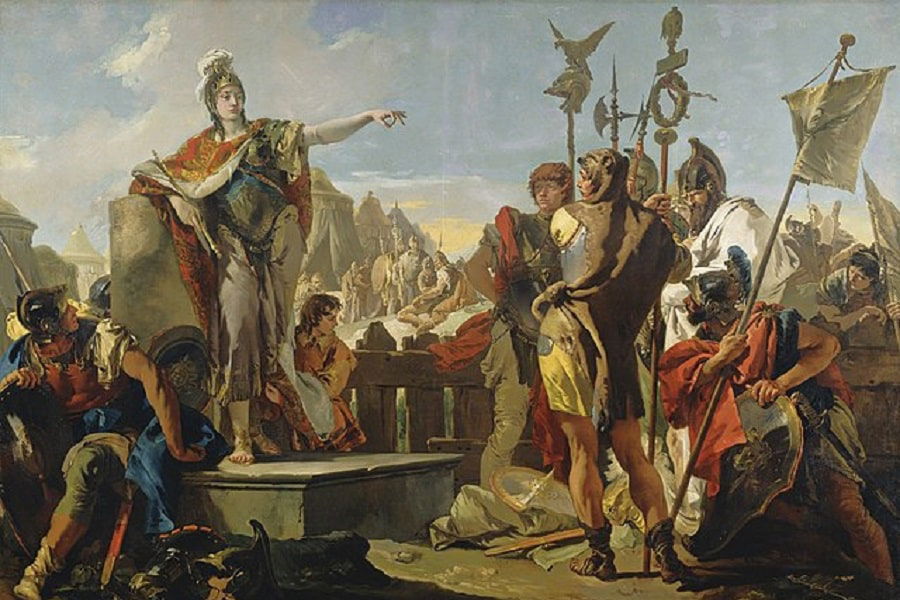
Septimia Zenobia ruled over the Palmyrene Empire in Syria in the 3rd century CE. After the assassination of her husband Odaenathus, she became the regent of her son Vaballathus. Only two years into her reign, this powerful female warrior launched an invasion into the eastern Roman Empire and managed to conquer large parts of it. She even conquered Egypt for a while.
Zenobia declared her son emperor and herself empress. This was meant to be a declaration of their secession from Rome. However, after heavy fighting, the Roman soldiers besieged Zenobia’s capital and Emperor Aurelian took her captive. She was exiled to Rome and lived there for the rest of her life. Accounts vary as to whether she died before long or became a well-known scholar, philosopher, and socialite and lived in comfort for many years.
READ MORE: Roman Emperors
Zenobia was reportedly an intellectual and turned her court into a center of learning and the arts. She was multilingual and tolerant of many religions since the Palmyrene court was a diverse one. Some accounts say that Zenobia was a tomboy even as a child and wrestled with the boys. As an adult, she is said to have had a manly voice, dressed like an emperor rather than an empress, rode horseback, drank with her generals, and marched with her army. Since most of these attributes were given to her by biographers of Aurelian, we must take this with a grain of salt.
What is clear, however, is that Zenobia has remained a symbol of female power far beyond her death, in Europe and the near East. Catherine the Great, Empress of Russia, emulated the ancient queen in the creation of a powerful military and intellectual court.
British Queens Boudicca and Cordelia
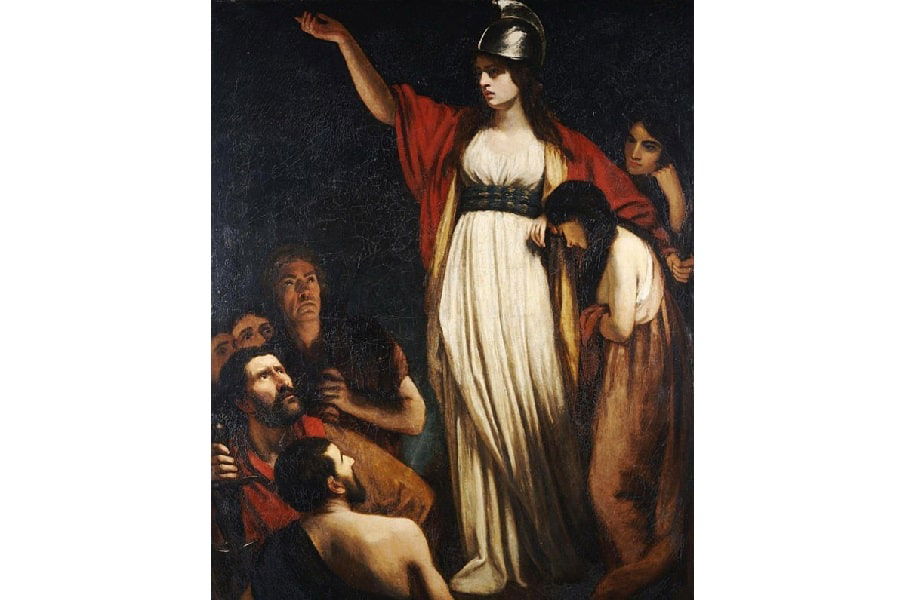
These two queens of Britain have both become known for fighting for their claims. One was a real woman and one was probably fictional. Boudicca was the queen of the British Iceni tribe in the 1st century CE. Although the uprising she led against the conquering forces failed, she has still gone down in British history as a national heroine.
Boudicca led the Iceni and other tribes in revolt against Roman Britain in the year 60-61 CE. She wanted to protect the claims of her daughters, who had been willed the kingdom on their father’s death. The Romans ignored the will and conquered the area.
Boudicca led a successful series of attacks and Emperor Nero even contemplated withdrawing from Britain. But the Romans regrouped and the Britons were finally defeated. Boudicca committed suicide by ingesting poison to spare herself from indignity at Roman hands. She was given a lavish burial and became a symbol of resistance and freedom.
Cordelia, the legendary queen of the Britons, was the youngest daughter of Leir, as recounted by cleric Geoffrey of Monmouth. She has been immortalized in Shakespeare’s play “King Lear” but there is little historical evidence for her existence. Cordelia was the second ruling queen before the Roman Conquest of Britain.
Cordelia was married to the King of the Franks and lived in Gaul for many years. But after her father was ousted and exiled by her sisters and their husbands, Cordelia raised an army and successfully waged war against them. She reinstated Leir and after his death three years later was crowned queen. She ruled peacefully for five years until her nephews sought to overthrow her. Cordelia is said to have personally fought at several battles but she was ultimately defeated and committed suicide.
Teuta: The Fearsome ‘Pirate’ Queen
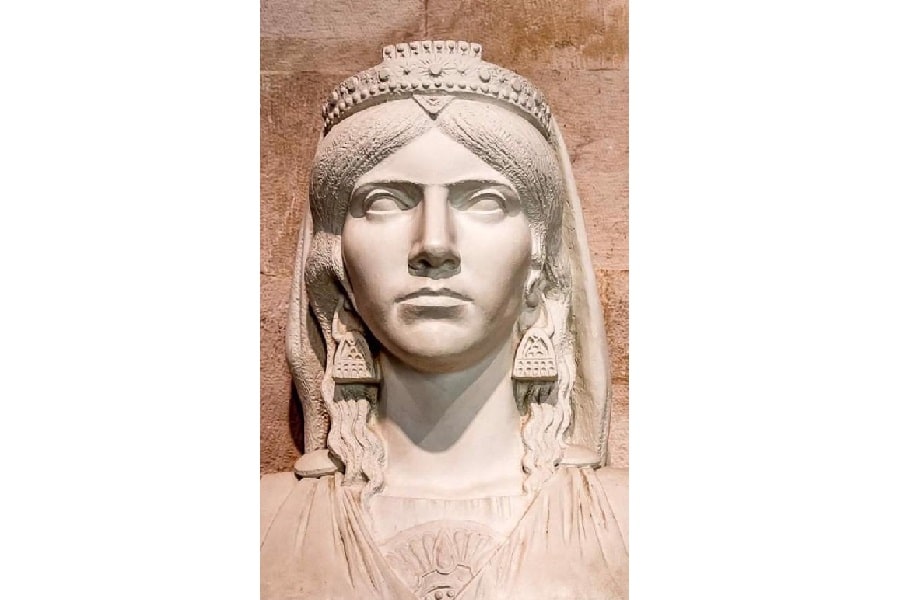
Teuta was the Illyrian queen of the Ardiaei tribe in the 3rd century BCE. After the death of her husband Agron, she became the regent of her infant stepson Pinnes. She came into conflict with the Roman Empire due to her ongoing policy of expansion in the Adriatic Sea. The Romans considered the Illyrians pirates since they interfered with regional trade.
The Romans sent a delegate to Teuta and one of the young ambassadors lost his temper and began shouting. It is said that Teuta had the man murdered, which gave Rome an excuse to begin a war against the Illyrians.
She lost the First Illyrian War and had to surrender to Rome. Teuta lost large parts of her territory and was confined to the northern part of her kingdom. Illyria’s armies are said to have pirated and looted Greek and Roman cities alike. While she does not seem to have personally led the attacks, it is clear that Teuta had command over the ships and armies and declared her intention not to put a stop to piracy.
Unbiased accounts about the Illyrian queen are hard to come by. What we know from her are largely the accounts of Roman biographers and historians who were not fans of her for both patriotic and misogynistic reasons. A local legend asserts that Teuta took her own life and threw herself off the Orjen mountains at Lipci in her grief at her defeat.
Fu Hao of the Shang Dynasty

Fu Hao was one of the many wives of the Chinese Emperor Wu Ding of the Shang Dynasty. She was also a high priestess and military general in the 1200s BCE. There is very little written evidence from the time but it is said that she led several military campaigns, commanded over 13000 soldiers, and was one of the foremost military leaders of her era.
READ MORE: A Full Timeline of Chinese Dynasties in Order
The maximum information we have on Lady Fu Hao has been obtained from her tomb. The objects that she was buried with give us clues about both her military and personal history. She was supposedly one of 64 wives, all of whom were from neighboring tribes and married off to the Emperor for alliances. She became one of his three consorts, rising through the ranks quickly.
Oracle bone inscriptions say that Fu Hao owned her own land and offered the Emperor valuable tributes. She may have been a priestess before her marriage. Her position as a military commander is evident from several mentions she finds in the Shang Dynasty oracle bone inscriptions (kept in the British Museum) and the weapons that have been found in her tomb. She was involved in leading campaigns against the Tu Fang, Yi, Ba, and Quiang.
Fu Hao was not the only woman who participated in warfare from this era. Her co-wife Fu Jing’s tomb also contained weapons and over 600 women are supposed to have been a part of the Shang armies.
Triệu Thị Trinh of Vietnam
Triệu Thị Trinh, also known as Lady Triệu, was a warrior in the 3rd century CE Vietnam. She fought against the Chinese Wu dynasty and managed to temporarily free her home from them for a while. While Chinese sources make no mention of her, she is one of the national heroes of the Vietnamese people.
When the Jiaozhi and Jiuzhen districts of Jiaozhou province were invaded by the Chinese, the local people rebelled against them. They were led by a local woman whose real name is unknown but who was referred to as Lady Triệu. She was allegedly followed by a hundred chieftains and fifty thousand families. The Wu dynasty sent more forces to put down the rebels and Lady Triệu was killed after several months of open rebellion.
A Vietnamese scholar described Lady Triệu as an extremely tall woman who had 3-foot-long breasts and who rode an elephant into battle. She had an extremely loud and clear voice and had no wish to be married or become the property of any man. According to local legends, she became immortal after her death.
Lady Triệu was also only one of the famed women warriors of Vietnam. The Trưng Sisters were also Vietnamese military leaders who fought off the Chinese invasion of Vietnam in 40 CE and ruled for three years after that. Phùng Thị Chính was a Vietnamese noblewoman who fought at their side against the Han invaders. According to legend, she gave birth on the frontlines and carried her child into battle in one hand and her sword in the other.
Al-Kahina: Berber Queen of Numidia
Dihya was the Berber queen of the Aurès. She was known as Al-Kahina, meaning ‘the diviner’ or ‘the priestess soothsayer,’ and was the military and religious leader of her people. She led a local resistance to the Islamic conquest of the Maghreb region, which was then called Numidia, and for a time became the ruler of the whole Maghreb.
She was born into a tribe in the region in the early 7th century CE and ruled a free Berber state peacefully for five years. When the Umayyad forces attacked, she defeated them in the Battle of Meskiana. However, a few years later, she was defeated in the Battle of Tabarka. Al-Kahina was killed in combat.
Legend says that when Hasan ibn al-Nu’man, general of the Umayyad Caliphate, marched across North Africa on his conquest, he was told the most powerful monarch was the Queen of the Berbers, Dihya. He was then defeated soundly at the Battle of Meskiana and fled.
The story of Kahina is told by various cultures, both North African and Arabic, from different perspectives. For one side, she is a feminist heroine to look up to. For the other, she is a sorcerer to be feared and defeated. At the time of the French Colonisation, Kahina was a symbol of opposition to both foreign imperialism and patriarchy. Warrior women and militants fought against the French in her name.
Joan of Arc

The most famous European female warrior is probably Joan of Arc. Honored as a patron saint of France and a defender of the French nation, she lived in the 15th century CE. She was born to a peasant family of some money and claimed to be guided by divine visions in all her actions.
She fought on behalf of Charles VII during the Hundred Years’ War between France and England. She helped relieve the siege of Orleans and persuaded the French to go on the offensive for the Loire Campaign, which ended in a decisive victory for France. She also insisted on the coronation of Charles VII during the war.
Joan was ultimately martyred at the young age of nineteen on accusations of heresy, including but not limited to blasphemy due to wearing men’s clothes. It is quite unlikely that she was a fighter herself, being more a symbol and rallying point for the French. While she was not given formal command of any forces, she was said to be present where the battle was the most intense, to join the front ranks of the troops, and advise the commanders on the positions in which to attack.
Joan of Arc’s legacy has varied over the years. She is one of the most recognizable figures from the medieval age. There was a lot of focus on her divine visions and connection to Christianity in the early days. But her position as a military leader, early feminist, and symbol of freedom is of great importance in the study of this figure at present.
Ching Shih: China’s Famous Pirate Leader

When we think of women warriors, usually it is queens and warrior princesses that come to mind. However, there are other categories. Not all women were fighting for their claims or their right to rule or for patriotic reasons. One of these women was Zheng Si Yao, the 19th-century Chinese pirate leader.
Also known as Ching Shih, she came from a very humble background. She was introduced to a life of piracy when she married her husband Zheng Yi. After his death, Ching Shih took control of his pirate confederation. She had the help of her stepson Zhang Bao in this (and she married him later).
Ching Shih was the unofficial leader of the Guangdong Pirate Confederation. 400 junks (Chinese sailing ships) and over 50,000 pirates were under her command. Ching Shih made powerful enemies and entered into conflicts with the British East India Company, Qing China, and the Portuguese Empire.
Eventually, Ching Shih gave up piracy and negotiated a surrender with the Qing authorities. This allowed her to avoid prosecution and retain control over a large fleet. She died after living a peaceful retired life. She was not only the most successful female pirate to ever exist, but she was also one of the most successful pirates in history.
The Night Witches of the Second World War
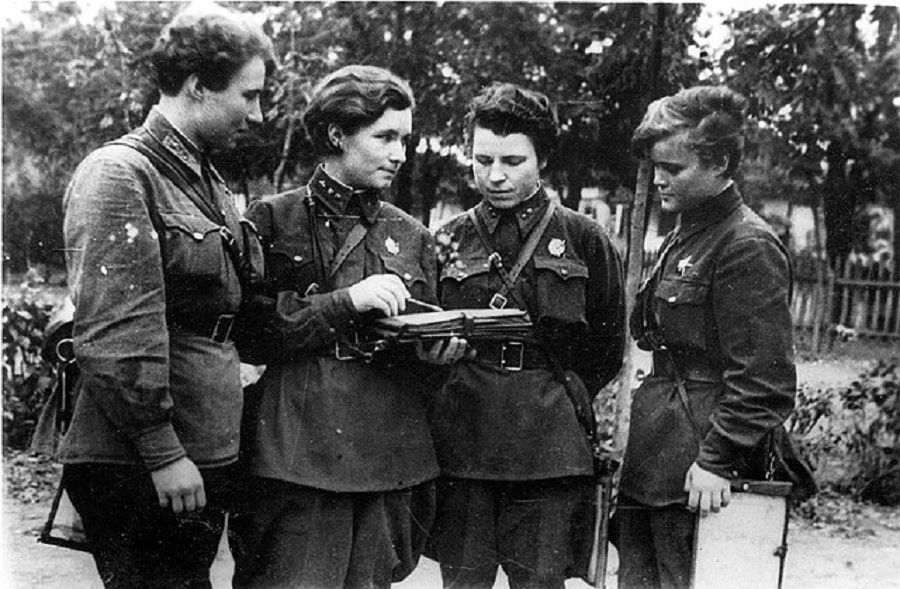
It isn’t only an ancient queen or noblewoman who can become a woman warrior. Modern armies were slower to open their ranks to women and it was only the Soviet Union that allowed women to participate in the war effort. But by the time the Second World War had come around, it was clear that women sorely needed to join the ranks.
The ‘Night Witches’ was a Soviet Union bomber regiment made up of only women. They flew the Polikarpov Po-2 bombers and were nicknamed ‘Night Witches’ because they swooped down quietly on the Germans by idling their engines. The German soldiers said the sound was like that of broomsticks. They took part in missions harassing enemy aircraft and precision bombing.
261 women served in the regiment. They were not well-received by the male soldiers and their equipment was often inferior. Despite this, the regiment had stellar records and several of them won medals and honors. While theirs was not the only regiment made up exclusively of warrior women, theirs became the most well-known one.
What Does It Mean To Be a Warrior Woman?
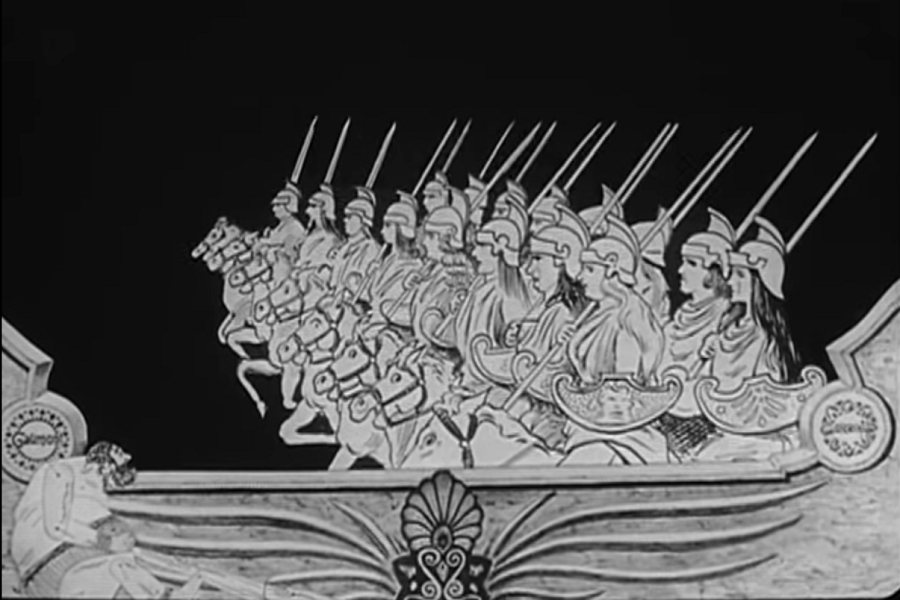
The archetypal view of the woman from prehistoric times is that of the nurturer, the caregiver, and the mother. This has played into gender roles and stereotypes for millennia. This is the reason that in both history and mythology, the names of our heroes, our soldiers, and our warriors have usually been male names.
However, that does not mean that warrior women do not exist and have not always existed. There are accounts of such women from every ancient civilization and culture around the world. War and violence may have traditionally been equated with masculinity.
But that narrow-minded view would ignore the women throughout history who have gone to war for their land, people, faith, ambitions, and every other reason that a man goes to war. In a patriarchal world, these women fought both for their convictions and their visibility, even if they did not know it. They were not just fighting in a physical war but were also fighting the traditional feminine roles that they had been forced into.
Thus, a study of these women provides a fascinating view of them as individuals as well as the societies that they belonged to. Women in the modern world can join the army and form female battalions. These are their predecessors, who went against the norms and carved their names into history books.
Different Accounts of Warrior Women
When we discuss warrior women, we must consider not only the historical ones but also the ones from myth, folktales, and fiction. We cannot forget the Amazons of Greek mythology, the women warriors from the ancient Indian epics, or the queens who have been transformed into goddesses by the ancient Celts, like Medb.
Imagination can be an extremely powerful tool. The fact that these mythical female figures existed is just as important as the actual women who defied gender roles to make their mark in the world.
Historical and Mythological Accounts
When we think of a woman warrior, for most laypersons the names that come to mind are Queen Boudicca or Joan of Arc, or the Amazonian Queen Hippolyte. Of these, the first two are historical figures while the last is a myth. We can look at most cultures and we would find a mixture of real and mythical heroines.
Queen Cordelia of Britain was almost certainly a mythical figure while Boudicca was a real one. Athena was the Greek goddess of war and trained in warfare but she had her historical counterparts in the ancient Greek queen Artemisia I and the warrior princess Cynane. Indian epics like the “Ramayana and Mahabharata” feature characters like Queen Kaikeyi and Shikhandi, a warrior princess who later becomes a man. But there were plenty of real and historical Indian queens who fought for their claims and their kingdoms against invading conquerors and colonizers.
Myths are inspired by real life so the very existence of such mythical figures is a clue that women’s roles in history were not cut and dry. Not all of them were simply content to sit at home waiting for their husbands or to give birth to the future heirs. They wanted more and they took what they could.

Folk Stories and Fairytales
In many folktales and legends, women play the roles of warriors, often in secret or disguised as men. One of these stories is the tale of Hua Mulan from China. In a ballad from the 4th-6th century CE, Mulan disguised herself as a man and took her father’s place in the Chinese army. She is said to have served for many years and returned home safely. This tale has been even more popularized after Disney’s adaptation of the animated film Mulan.
In the French fairytale, “Belle-Belle” or “The Fortunate Knight,” the youngest daughter of an old and impoverished nobleman, Belle-Belle, went off in her father’s stead to become a soldier. She equipped herself with weapons and disguised herself as a knight named Fortune. The tale is about her adventures.
The Russian fairytale, “Koschei the Deathless,” features the warrior princess Marya Morevna. She originally defeated and captured the evil Koschei, before her husband made the mistake of freeing the evil sorcerer. She also went off to war leaving her husband Ivan behind.
Books, Films, and Television
The “Shāhnāmeh,” the Persian epic poem, talks about Gordafarid, the female champion who fought against Sohrab. Other such literary women warriors are Camille from “The Aeneid,” Grendel’s mother from “Beowulf,” and Belphoebe from “The Faerie Queene” by Edmund Spenser.
With the birth and rise of comic books, warrior women have become a common part of popular culture. Marvel and DC Comics have introduced into mainstream film and television various powerful women warriors. Some examples are Wonder Woman, Captain Marvel, and Black Widow.
Other than this, martial arts films from east Asia have long featured women who are equal in skill and warlike tendencies to their male counterparts. Fantasy and science fiction are other genres where the idea of women fighting is considered commonplace. Some very popular examples would be Star Wars, Game of Thrones, and Pirates of the Caribbean.
Their Legacy
The feminist reaction to women warriors can be of two kinds. The first is an admiration of and a wish to emulate these ‘violent’ queens. Seeing the kind of violence that women, particularly indigenous women, and women from marginalized backgrounds, are subjected to all the time, this could be a reclamation of power. It could be a means of striking back.
For others, whose feminism is a condemnation of the masculine penchant for violence, this does not solve any problems. These women from history lived hard lives, waged terrible wars, and in many cases died brutal deaths. Their martyrdom did not solve any of the intrinsic problems that plague a world dominated by patriarchy.
However, there is another way of looking at these warrior women. It was not simply the fact that they resorted to violence that is important. It is a fact that they broke out of the mold of gender roles. War and battle were the only means available to them then, although there were those like Zenobia who were also interested in economics and court politics.
For us, in these modern times, breaking the mold of gender roles is not about becoming a soldier and going to war against men. It could also mean a woman becoming a pilot or an astronaut or a CEO of a big corporation, all fields that are dominated by men. Their battle armor would be different from that of Joan of Arc but no less vital.
Certainly, these women should not be ignored and swept under the rug. Their stories can serve as guidelines and lessons to live by, just like the male heroes who we have heard much more about. They’re important stories for young girls and boys to hear. And what they take from these tales can be diverse and multifaceted.